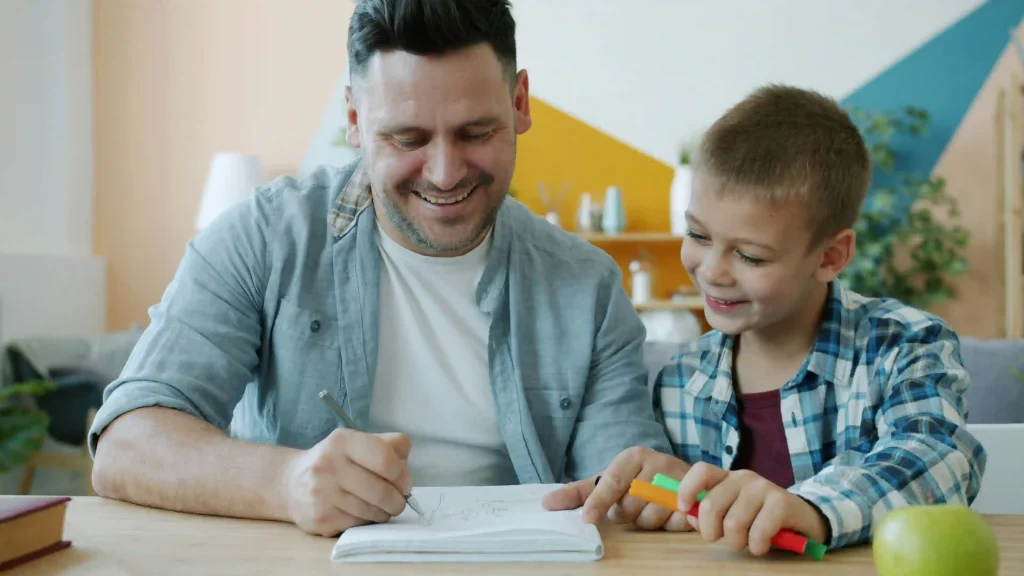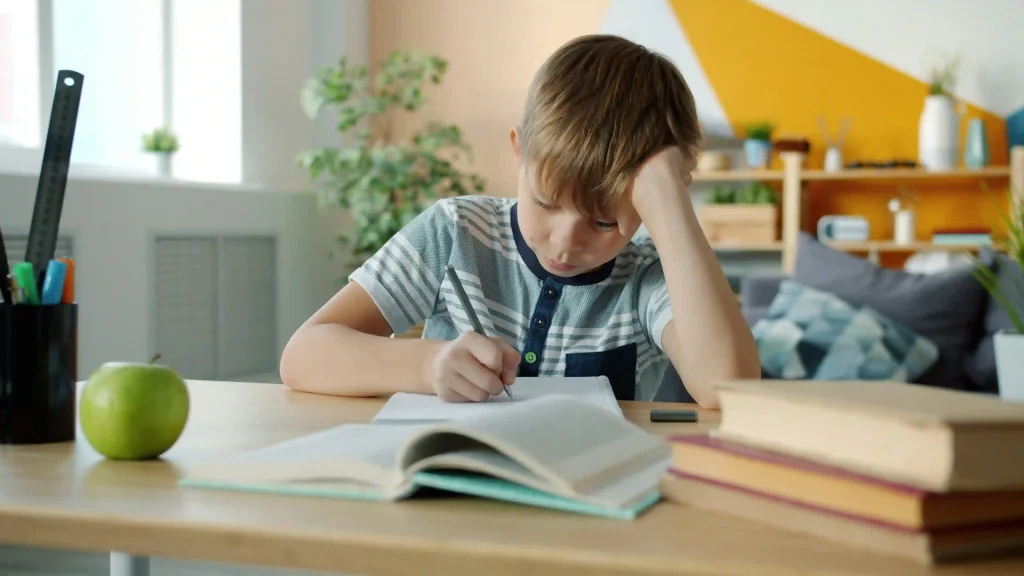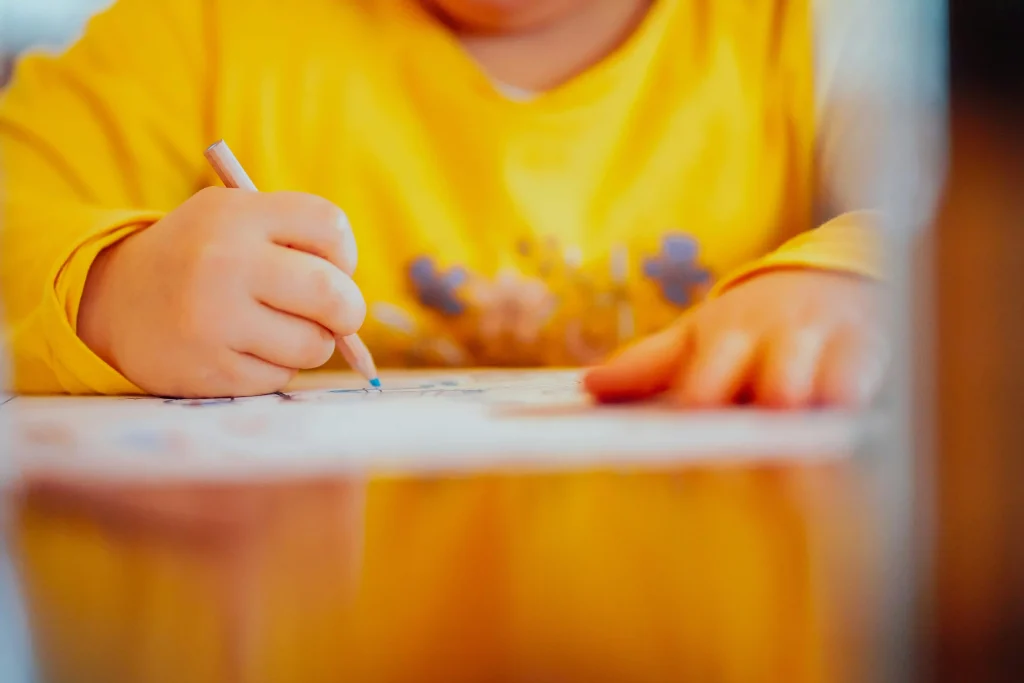Contents
- 1 What Is Self Study — and Why It Matters Today
- 2 How Self Study Really Works: Cognitive Science & Evidence-Based Principles
- 3 Self Study Methods & Techniques: Practical Strategies for Kids (Grades 2–6)
- 4 Digital Self Learning & Online Tools in Self Study
- 5 A Day in the Life: Self4kids Self Study in Irvine
- 6 Answering Key Questions (People Also Ask)
- 7 Implementing a Self Study Plan: Step-by-Step for Parents & Educators
- 8 Pros, Limitations & Best Practices
- 9 FAQ
- 10 Conclusion & Next Steps
What Is Self Study — and Why It Matters Today
In today’s fast-changing world, the ability to self study is not just a “nice to have” skill — it is a fundamental life skill. Self study refers to the learner-driven process in which a student independently plans, practices, monitors, and evaluates their own learning — often combining offline and digital strategies.
Self study is: a structured, intentional, active learning approach where the learner (with guidance) directs what, how, and when to learn — bridging curiosity, discipline, and reflection.
There are three core reasons it matters now:
- Lifelong learning is the norm — careers evolve; children who can self-teach adapt faster.
- Educational flexibility — self study provides resilience in hybrid and changing environments.
- Scientific validation — research shows that active, retrieval-based methods outperform passive instruction in long-term retention.

How Self Study Really Works: Cognitive Science & Evidence-Based Principles
The Most Effective Self Study Techniques
Many study methods are popular — rereading notes, highlighting, watching videos — but not all are equally effective. Decades of educational psychology research confirm that retrieval practice and spaced learning are the gold standards.
Practice Testing / Self-Quizzing
Trying to recall information from memory strengthens retention far more than re-reading or highlighting.
Distributed / Spaced Practice
Spacing learning over several sessions instead of cramming allows time for memory consolidation.
Interleaving
Mixing different but related topics in a session helps learners discriminate between concepts and apply them flexibly.
Elaborative Interrogation & Self-Explanation
Encouraging students to ask “why?” and explain material in their own words deepens comprehension.
Worked Examples
Studying step-by-step solutions to problems, especially in math or science, helps build confidence and reduce cognitive overload.
Why Some Popular Methods Fail
- Rereading & Highlighting often give the illusion of understanding but produce weak recall.
- Summarization can help, but only when structured properly.
- Cramming yields short-term results but weak long-term memory.
Motivation, Metacognition & Self-Regulation
Effective self study requires more than good techniques — it needs metacognitive awareness. Learners must monitor their progress and adjust their approach when needed. For younger students, parents and teachers play a vital role in scaffolding this self-awareness until it becomes natural.
Self Study Methods & Techniques: Practical Strategies for Kids (Grades 2–6)
Goal Setting, Planning & Structure
- Begin with small, achievable goals (“memorize times tables up to 5,” “summarize one story”).
- Use planners or checklists to break down study sessions.
- Apply short study intervals (e.g., 20 minutes on / 5 minutes off).
- Maintain consistency — daily effort beats occasional long sessions.
Chunking, Scheduling & Study-at-Home Tips
- Break lessons into 10–15 minute “micro-chunks.”
- Rotate subjects to avoid fatigue.
- Designate a clean, distraction-free study area.
- Schedule sessions during high-energy hours.
- Add small breaks, water, and movement to reset focus.
Multisensory & Active Learning
- Encourage drawing, mind mapping, or explaining aloud.
- Use manipulatives like blocks or flashcards for tactile learners.
- Turn concepts into songs, skits, or games to reinforce memory.
- Let children “teach” what they’ve learned to siblings or parents.
Flashcards, Games & Spaced Repetition
- Use flashcards to promote retrieval practice.
- Try digital apps or printable cards with spaced review cycles.
- Turn revision into friendly quizzes or game-based challenges.
Peer Study, Accountability & Family Involvement
- Partner with a friend or family member for weekly check-ins.
- Track progress visually with stickers or streak charts.
- Reward consistency, effort, and curiosity — not just perfect grades.
- Encourage reflection: “What was easy? What was tricky? What will you change next time?”

Digital Self Learning & Online Tools in Self Study
Choosing the Right Online Tools
Look for platforms that offer:
- Adaptive feedback
- Engaging but distraction-free design
- Progress tracking and reports
- Safe data and privacy features
- Device compatibility
Popular options include educational games, adaptive platforms, and reading apps that balance learning with fun.
How AI Is Shaping Self Study
Artificial Intelligence is revolutionizing how children learn:
- Adaptive AI systems personalize lessons in real time.
- AI tutors provide instant hints and explanations.
- Chatbots simulate teacher guidance for practice questions.
- Intelligent analytics help parents and teachers identify learning gaps.
However, moderation is essential. Overreliance on AI can reduce creativity and problem-solving if students stop thinking critically. Teach children to question, verify, and reflect on AI-generated information.
Advantages & Risks of Digital Self Learning
Advantages
- Access to vast learning materials
- Personalized feedback
- Flexibility of schedule
- Fun, interactive interfaces
Risks
- Distraction and overexposure to screens
- Inaccurate or biased content
- Reduced deep focus
- Technology access inequality
Blending Digital & Offline Methods
Balance is key. Use technology for practice, diagnostics, and engagement — but maintain traditional methods like writing, reading aloud, and physical flashcards to reinforce retention.

A Day in the Life: Self4kids Self Study in Irvine
Our Fifteen -Year Data
At Self4kids, we’ve observed remarkable progress among students practicing structured self study. Over five years:
- Students using daily spaced review improved recall by 25%.
- Regular self-assessment increased engagement by 35%.
- Learners who practiced weekly reflection showed deeper understanding and longer retention.
Sample Schedule for Grades 2–6
| Time | Activity | Purpose |
| 3:30 – 3:45 pm | Snack & light reading | Transition & relaxation |
| 3:45 – 4:10 pm | Math review (digital or workbook) | Concept reinforcement |
| 4:10 – 4:20 pm | Quiz practice | Retrieval & confidence building |
| 4:20 – 4:30 pm | Short break | Reset & refresh |
| 4:30 – 4:50 pm | Vocabulary or reading comprehension | Literacy development |
| 4:50 – 5:00 pm | Reflection journal | Build metacognitive skills |
Parent & Teacher Roles
- Guide early routines and model reflection.
- Ask open-ended questions rather than providing answers.
- Offer feedback weekly and celebrate persistence.
- Encourage accountability without pressure.
Challenges & How We Solved Them
- Motivation drops: We introduced gamified streaks and peer challenges.
- Digital distraction: Study windows with blocked notifications.
- Inconsistency: Weekly reminders and progress charts.
- Overuse of AI: Teaching kids to attempt answers first, then verify with AI.
Answering Key Questions (People Also Ask)
How do you develop a habit of self-studying?
Start small — 15-minute sessions daily. Track progress visually, celebrate consistency, and adjust slowly. Habits form when effort feels manageable and rewarded.
What are the best self study techniques?
Retrieval practice (testing yourself), spaced repetition, and interleaving are the most effective. Combine these with self-explanation and regular reflection for best results.
How can a child study at home effectively?
Create structure, limit distractions, set daily goals, and combine online and offline tools. Parental encouragement and check-ins reinforce accountability and motivation.
Is self study better than guided instruction?
Both have value. Direct instruction builds foundations; self study deepens understanding and independence. The best model blends the two.
How does AI affect self study and learning outcomes?
AI enhances personalization and engagement but must be used wisely. It should guide learning, not replace critical thinking or curiosity.
Implementing a Self Study Plan: Step-by-Step for Parents & Educators
Step 1: Assess Starting Points
Identify strengths, gaps, and preferred learning styles through discussion or short diagnostic exercises.
Step 2: Define Clear Goals
Set measurable, time-bound objectives like “complete ten reading comprehension exercises this week.” Break them into small milestones.
Step 3: Build Routine & Environment
Designate a consistent study time and create a distraction-free workspace. Use timers to structure focus intervals.
Step 4: Mix Techniques & Tools
Alternate between reading, quizzing, and application. Blend digital tools with analog methods for richer learning experiences.
Step 5: Monitor & Adjust
Check weekly progress. Ask: “What worked best this week?” Adjust goals and methods to fit evolving needs.
Pros, Limitations & Best Practices
Advantages
- Builds independence and confidence
- Encourages deep learning
- Adapts to each child’s pace
- Complements formal schooling
Limitations
- May falter without structure or supervision
- Not ideal for entirely new or abstract concepts
- Overuse of technology can reduce focus
Preventing Motivation Slumps
- Introduce variety — switch subjects or formats.
- Use small, visible wins.
- Make study social — involve peers or parents.
- Keep sessions short and engaging.
Ethical Use of AI
- Teach children to verify and explain answers in their own words.
- Avoid copying — promote critical discussion.
- Encourage curiosity and reflection after every AI-assisted task.
FAQ
What is self study?
Self study is a student-led process of learning and reflection that builds autonomy, critical thinking, and long-term retention.
How long should a child self study daily?
Fifteen to thirty minutes per subject is ideal for younger learners. Focus on quality, not duration.
Which self study techniques are most effective?
Retrieval practice, spaced repetition, interleaving, and reflection consistently outperform passive review.
Can AI tools help kids self study?
Yes — AI can personalize lessons and provide feedback, but human guidance remains essential.
How to keep a child motivated?
Celebrate effort, introduce games or challenges, and maintain consistent but short routines.
Conclusion & Next Steps
Core Takeaways
Self study thrives on structure, reflection, and a mix of techniques. When children learn to guide their own learning journey, they gain not just knowledge — but confidence, curiosity, and adaptability.
How Self4kids Supports Families
At Self4kids, we design programs that blend science-backed study methods with nurturing mentorship. Our Irvine-based approach gives children a foundation of independence and love for learning.
Visit our About Us page to learn how our team coaches parents and empowers students to study smarter — not harder.
Next Step for Parents
Download our Self Study Starter Kit with planners, flashcard templates, and reflection worksheets. Help your child take the first confident step toward lifelong learning.


